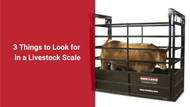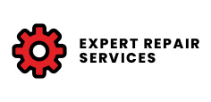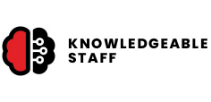3 Things to Look for in a Livestock Scale
Posted by Greg J on May 3rd 2021
Whether you raise 100 head of beef cattle on a single farm or run a large-scale dairy operation across multiple facilities, purchasing a heavy-duty livestock scale is a major investment. Because of this, you want to make sure that you’re choosing the best possible scale to meet your unique weighing needs.
At Scales Plus, our experts have worked directly with ranchers, veterinarians, breeders, and other animal care professionals, so we know the right questions to ask in each industry. When it comes to choosing a livestock scale that will maximize your operation’s efficiency and profitability, there are three main criteria to look for.
1. A maximum capacity large enough for your livestock
While this first one may seem obvious at first glance, you would be surprised at how many people grossly underestimate the maximum weight of their livestock. Even though many of the scales we sell have a safe overload capacity of around 125-150%, you really don’t want to make a regular habit of pushing this limit on such a valuable piece of equipment.
Depending on the type of livestock you own, the maximum capacity of the scale you choose can vary drastically. The animal’s breed can play a big part as well, as there is nearly a half-ton difference between a Clydesdale and a racing Thoroughbred, for example.
The other important thing to note when looking at scales is the dimensions of the weighing platform. Just because a scale has the maximum capacity you need doesn’t mean it’s going to work for your needs, as you wouldn’t hope to fit a full-size Holstein on a 22” x 22” platform.
| Livestock Type | Average Weight (lbs.) | Recommended Capacity (lbs.) |
| Bull | 1,500 – 2,400 | 4,000 |
| Beef Cattle | 1,000 – 1,400 | 2,000 |
| Dairy Cow | 1,400 – 2,000 | 3,000 |
| Horse | 900 – 2,000 | 3,000 |
| Swine | 110 – 770 | 1,000 |
| Llama & Alpaca | 110 – 440 | 1,000 |
| Goat | 120 – 280 | 500 |
| Sheep | 100 – 350 | 500 |
| Poultry | 3 – 13 | <100 |
2. The right setup for your weighing methods (portable vs. permanent)
The other important thing to note when looking at scales is the dimensions of the weighing platform. Just because a scale has the maximum capacity you need doesn’t mean it’s going to work for your needs, as you wouldn’t hope to fit a full-size Holstein on a 22” x 22” platform.
The next most important thing to consider is where and how you plan to weigh your livestock. Do you want a permanent scale fixture in your facility, or would you prefer the advantages of a portable option?
Permanent livestock scales
If all your animals are in one general area, then a permanent weighing solution may be your best option. Typically located within a squeeze chute and bolted into concrete, permanent scales tend to be the more sturdy and reliable option.
Just keep in mind that most permanent scales require AC power, so you’ll want to make sure they’re in a location with access to a safe, dry outlet.

Portable livestock scales
On the other hand, if your animals are spread out across multiple facilities or properties, then a portable weighing solution may be a more ideal fit for your business. These scales are primarily battery-operated, allowing you to measure livestock wherever they happen to be, improving your overall efficiency.
Easy-grip handles and/or heavy-duty casters make it easy to weigh your animals in temporary locations such as alleys or veterinary site visits. Just be sure to choose a level and stable surface for the most accurate measurements possible.

3. An indicator with the data and features you need
Live animals have notoriously been one of the most different things to weigh, which is why all modern animal scales include a dynamic weighing system. This feature automatically removes any outlying measurements, meaning the movements of an agitated or excited animal won’t interfere, ensuring a quick and accurate reading.
Beyond that, livestock scales can come with a whole host of other advanced features that can save you plenty of time and money. Here are a few of our favorites:
- Hold Function: By pressing the HOLD button, the weight will freeze on the display, allowing the operator to record the weight after the animal is removed from the scale.
- EID Integration: This one is a true game-changer. Electronic identification tags, also known as RFID ear tags, allow ranchers and dairy farmers to easily keep tabs on their animals. By syncing with these EID tags, a scale can automatically upload each animal’s weight into your digital record-keeping system, saving you hours of manual documentation.
- Customizable Data Fields: EID tags can monitor many other types of data such as breed, sex, vaccination records, and pregnancy status. The most advanced livestock scales can work directly with your livestock management software to provide you with the most up-to-date and accurate information possible.
Shop livestock scales at Scales Plus
Now that you know what to look for, it’s time to browse our wide selection of veterinary balances and livestock scales. If you have any questions, contact our livestock scale experts. We’re always happy to help.





